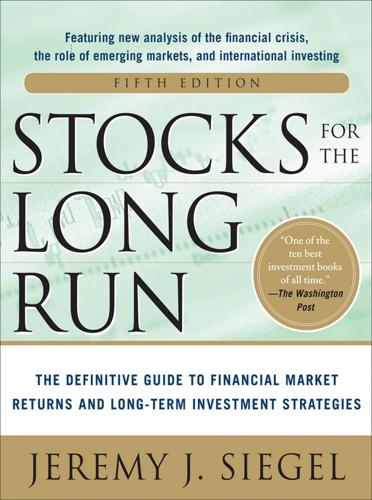
Stocks for the Long Run 5/E: the Definitive Guide to Financial Market Returns & Long-Term Investment Strategies
by
Jeremy Siegel
Published 7 Jan 2014
—ROGER LOWENSTEIN, “A COMMON MARKET: THE PUBLIC’S ZEAL TO INVEST”2 Stocks for the Long Run by Siegel? Yeah, all it’s good for now is a doorstop. —INVESTOR CALLING INTO CNBC, MARCH, 20093 “EVERYBODY OUGHT TO BE RICH” In the summer of 1929, a journalist named Samuel Crowther interviewed John J. Raskob, a senior financial executive at General Motors, about how the typical individual could build wealth by investing in stocks. In August of that year, Crowther published Raskob’s ideas in a Ladies’ Home Journal article with the audacious title “Everybody Ought to Be Rich.” In the interview, Raskob claimed that America was on the verge of a tremendous industrial expansion. He maintained that by putting just $15 per month into good common stocks, investors could expect their wealth to grow steadily to $80,000 over the next 20 years.
…
This limitation of liability shall apply to any claim or cause whatsoever whether such claim or cause arises in contract, tort or otherwise. CONTENTS Foreword Preface Acknowledgments PART I STOCK RETURNS: PAST, PRESENT, AND FUTURE Chapter 1 The Case for Equity Historical Facts and Media Fiction “Everybody Ought to Be Rich” Asset Returns Since 1802 Historical Perspectives on Stocks as Investments The Influence of Smith’s Work Common Stock Theory of Investment The Market Peak Irving Fisher’s “Permanently High Plateau” A Radical Shift in Sentiment The Postcrash View of Stock Returns The Great Bull Market of 1982-2000 Warnings of Overvaluation The Late Stage of the Great Bull Market, 1997-2000 The Top of the Market The Tech Bubble Bursts Rumblings of the Financial Crisis Beginning of the End for Lehman Brothers Chapter 2 The Great Financial Crisis of 2008 Its Origins, Impact, and Legacy The Week That Rocked World Markets Could the Great Depression Happen Again?
…
See also United Kingdom, 209–210 Entitlement crisis age wave in, 58–59, 62–64 conclusions about, 71 emerging economies and, 58–59, 64–68 introduction to, 57–58 life expectancies in, 59 productivity growth in, 69–71 retirement ages in, 59–62, 64–67 world demographics and, 62–64 Equity since 1802, generally, 5–7 during 1982–2000, 12–17 common stock theory and, 8–9 “Everybody Ought to Be Rich” on, 3–5 favorable factors for, 139 financial crises and, 17–19 Fisher on, 9 globally, 196 historical facts about, 3–19 Lehman Brothers and, 18–19 market peaks and, 9 media fiction about, 3–19 mutual funds, 358–363 overvaluation and, 14–15 “permanently high plateau” of, 9–10 in postcrash views, 11–12 premiums, 87–88 real return on, 170 required return on, 144, 147–148 risk premiums, 171–172, 350–352 sentiments about, 10–11 Smith on, 8 stocks and, historically, 7–10 tech bubble and, 16–17 top of the market and, 16 worldwide, 88–90 Equity mutual funds, 358–363 “The Equity Premium: A Puzzle,” 171 Equity risk premiums, 171–172, 350–352 Establishment surveys, 261–262 ETFs (Exchange-traded funds).

Stocks for the Long Run, 4th Edition: The Definitive Guide to Financial Market Returns & Long Term Investment Strategies
by
Jeremy J. Siegel
Published 18 Dec 2007
This page intentionally left blank 1 CHAPTER STOCK AND BOND RETURNS SINCE 1802 I know of no way of judging the future but by the past. PA T R I C K H E N R Y, 1 7 7 5 1 “EVERYBODY OUGHT TO BE RICH” In the summer of 1929, a journalist named Samuel Crowther interviewed John J. Raskob, a senior financial executive at General Motors, about how the typical individual could build wealth by investing in stocks. In August of that year, Crowther published Raskob’s ideas in a Ladies’ Home Journal article with the audacious title “Everybody Ought to Be Rich.” In the interview, Raskob claimed that America was on the verge of a tremendous industrial expansion. He maintained that by putting just $15 per month into good common stocks, investors could expect their wealth to grow steadily to $80,000 over the next 20 years.
…
If you’d like more information about this book, its author, or related books and websites, please click here. For more information about this title, click here C O N T E N T S Foreword xv Preface xvii Acknowledgments xxi PART 1 THE VERDICT OF HISTORY Chapter 1 Stock and Bond Returns Since 1802 3 “Everybody Ought to Be Rich” 3 Financial Market Returns from 1802 5 The Long-Term Performance of Bonds 7 The End of the Gold Standard and Price Stability 9 Total Real Returns 11 Interpretation of Returns 12 Long-Term Returns 12 Short-Term Returns and Volatility 14 Real Returns on Fixed-Income Assets 14 The Fall in Fixed-Income Returns 15 The Equity Premium 16 Worldwide Equity and Bond Returns: Global Stocks for the Long Run 18 Conclusion: Stocks for the Long Run 20 Appendix 1: Stocks from 1802 to 1870 21 Appendix 2: Arithmetic and Geometric Returns 22 v vi Chapter 2 Risk, Return, and Portfolio Allocation: Why Stocks Are Less Risky Than Bonds in the Long Run 23 Measuring Risk and Return 23 Risk and Holding Period 24 Investor Returns from Market Peaks 27 Standard Measures of Risk 28 Varying Correlation between Stock and Bond Returns 30 Efficient Frontiers 32 Recommended Portfolio Allocations 34 Inflation-Indexed Bonds 35 Conclusion 36 Chapter 3 Stock Indexes: Proxies for the Market 37 Market Averages 37 The Dow Jones Averages 38 Computation of the Dow Index 39 Long-Term Trends in the Dow Jones 40 Beware the Use of Trend Lines to Predict Future Returns 41 Value-Weighted Indexes 42 Standard & Poor’s Index 42 Nasdaq Index 43 Other Stock Indexes: The Center for Research in Security Prices (CRSP) 45 Return Biases in Stock Indexes 46 Appendix: What Happened to the Original 12 Dow Industrials?
…
., 156 Emerging markets: market bubble in, 166–167 sector allocation and, 175i, 177 Emotion, coping with, 363 Employee Retirement Income Security Act of 1974 (ERISA), 143–144 Employee stock options, controversy over, 104–105 Employment cost index (ECI), 246 Employment costs, 246 Employment report, 241–243 Employment statistics, 237–238 Enel, 177 Energy sector: in GICS, 53 global shares in, 175i, 177 England, end of gold standard in, 187–188 ENI, 177 Enron, 89, 234–235 Equity, world, 162, 163i, 164 Equity risk premium, 16–18, 17i, 332–333 Establishment survey, 241 Index Europe: global market share of, 179, 179i, 180i sector allocation and, 175i, 177 Evans, Richard E., 356 “Everybody Ought to Be Rich” (Crowther), 3 Excess returns, 215 Excessive trading, 325–328 Exchange-rate policies, stock market crash of 1987 and, 274–275 Exchange-traded funds (ETFs), 252–253, 258, 342 authorized participants and, 252 choosing, 262–264, 263i creating, 258 creation units and, 252 cubes, 252 diamonds, 252 exchanges in kind and, 253 spiders, 252 using, 261–262 Exchanges in kind, 253 Exelon Corp., 177 Extraordinary Delusions and the Madness of Crowds (Mackay), 324 Exxon, 55 Exxon Mobil, 40, 144, 176i, 177–178, 183 Fads, 323–325 Fama, Eugene, 140–141, 152, 157 Fannie Mae, 54, 116 “Fear and Greed” (Shulman), 86 Fed model, 113–115, 114i Federal funds market, 196 Federal funds rate, 196 Federal Reserve System (Fed): dollar stabilization program and, 274 establishment of, 191–192 Great Depression and, 79 interest rates and, 196, 197i, 198–199 371 Federal Reserve System (Fed) (Cont.): money creation and, 195–196 postdevaluation monetary policy and, 193–194 postgold monetary policy and, 194–195 rate cuts following 1998 fall on DJIA, 88 Fernandez, Henry, 356n Fidelity Magellan Fund, 345–346, 348 Financial Accounting Standards Board (FASB), 102–103 Financial Analysts Journal, 97 Financial markets: central bank policy and, 247 inflation’s impact on, 246 Financial sector: in GICS, 53 global shares in, 175, 175i Firestone, 64 First National Bank of Pennsylvania, 21n First Union Bank, 21n Fischhoff, B., 326n Fisher, Irving, 4n, 23q, 78–79, 79, 80, 86, 201n Fisher, Lawrence, 45, 84 Fisher effect, 201–202 Fixed-income assets: fall in returns on, 15–16 real returns on, 14–16, 15i (See also Bonds) Flintkote, 60i, 62–63, 64 Float-adjusted shares, in capitalization-weighted indexing, 353 Foman, Robert, 85 Ford, Gerald, 216 Ford Motor Company, 64 Foreign exchange risk, hedging, 173 Foreign markets (see Global investing) Fortune Brands, 48, 61, 61n Forward-looking bias, 330 Franklin, Benjamin, 65q Franklin Templeton, 346 Freddie Mac, 54, 116 French, Ken, 140–141, 152, 157 Friedman, Robert, 108n Froot, Kenneth A., 173n FT-SE index, 238 Fund performance, 342–346, 343i–345i Fundamental analysis (see Technical analysis) “Fundamental Indexation” (Arnott, Hsu, and Moore), 356 Fundamentally weighted indexation, 353–357 capitalization-weighted indexing versus, 353–355 history of, 356–357 Fundamentals, 110 Futures contracts (see Stock index futures) Gaps, 275–276 Gartley, H.
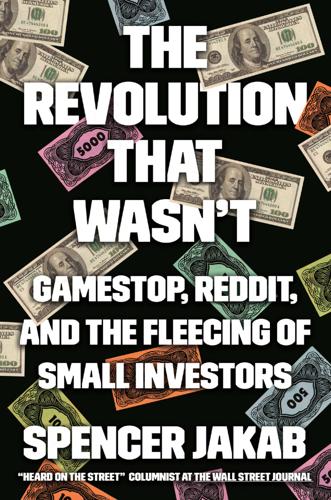
The Revolution That Wasn't: GameStop, Reddit, and the Fleecing of Small Investors
by
Spencer Jakab
Published 1 Feb 2022
“A man with a million dollars used to be considered rich, but so many people have at least that much in these days, or are earning incomes in excess of a normal return from a million dollars, that a millionaire does not cause any comment.” The slightly archaic turn of phrase, though not the view of a million dollars being chump change, might have tipped you off to this quote’s vintage. It was from an interview with the auto executive and stock market speculator John J. Raskob in Ladies’ Home Journal, titled “Everybody Ought to Be Rich,” that hit newsstands one week before the peak of the Roaring Twenties bull market and two months before the Great Crash of 1929.[1] The American public was already deeply, fatefully in love with the stock market by then, but Raskob, who had started several investment trusts over the years, was suggesting a way for people to supercharge their participation and do some catching up with the leisure class.
…
BACK TO NOTE REFERENCE 2 Interview with Jordan Belfort via Zoom video, February 11, 2021. BACK TO NOTE REFERENCE 3 Elon Musk (@elonmusk), “Gamestonk!!” Twitter, January 26, 2021, 4:08 p.m., twitter.com/elonmusk/status/1354174279894642703. BACK TO NOTE REFERENCE 4 Chapter 15: The Influencers John J. Raskob, “Everybody Ought to Be Rich,” Ladies Home Journal, August 1929. BACK TO NOTE REFERENCE 1 Chamath Palihapitiya (@chamath), “Lots of $GME talk soooooo. . . . We bought Feb $115 calls on $GME this morning. Let’s gooooooo!!!!!!!!” Twitter, January 26, 2021, 10:32 a.m., twitter.com/chamath/status/1354089928313823232.

Irrational Exuberance: With a New Preface by the Author
by
Robert J. Shiller
Published 15 Feb 2000
“If she saved only 10% of her income and invested the savings in an S&P index fund she’d have a net worth of $1.4 million on retirement at age 67, in today’s dollars.”8 These calculations assume that the S&P index fund earns a riskless 8% real (inflation-corrected) return. There is no mention of the possibility that the return might not be so high over time, and that she might not end up a millionaire. An article with a very similar title, “Everybody Ought to Be Rich,” appeared in the Ladies’ Home Journal in 1929.9 It performed some very similar calculations, yet similarly omitted to describe the possibility that anything could go wrong in the long term. The article became notorious after the 1929 crash. These seemingly convincing discussions of potential increases in the stock market are rarely offered in the abstract, but instead in the context of stories about successful or unsuccessful investors, and often with an undertone suggesting the moral superiority of those who invested well.
…
Frederick Lewis Allen, Only Yesterday (New York: Harper and Brothers, 1931), p. 309. 7. David Elias, Dow 40,000: Strategies for Profiting from the Greatest Bull Market in History (New York: McGraw-Hill, 1999), p. 8. 8. Dwight R. Lee and Richard B. MacKenzie, “How to (Really) Get Rich in America,” USA Weekend, August 13–15, 1999, p. 6. 9. Samuel Crowther, “Everybody Ought to Be Rich: An Interview with John J. Raskob,” Ladies Home Journal, August 1929, pp. 9, 36. 10. Bodo Schäfer, Der Weg zur finanziellen Freiheit: In sieben Jahren die erste Million (Frankfurt: Campus Verlag, 1999); Bernd Niquet, Keine Angst vorm nächsten Crash: Warum Aktien als Langfristanlage unschlagbar sind (Frankfurt: Campus Verlag, 1999). 11.

The Gone Fishin' Portfolio: Get Wise, Get Wealthy...and Get on With Your Life
by
Alexander Green
Published 15 Sep 2008
Jeremy Siegel has told the infamous story of John Jacob Raskob. In the summer of 1929, Ladies Home Journal interviewed Raskob, a senior executive with General Motors, about how the typical individual could build wealth by investing in stocks. In the article published that August, titled “Everybody Ought to Be Rich,” Raskob claimed that by putting $15 a month into high-quality stocks, even the average worker could become wealthy. His timing left something to be desired. Just seven weeks after the article appeared came Black Friday, the stock market crash of 1929. And it wasn’t until July 8, 1932, that the carnage finally came to an end.
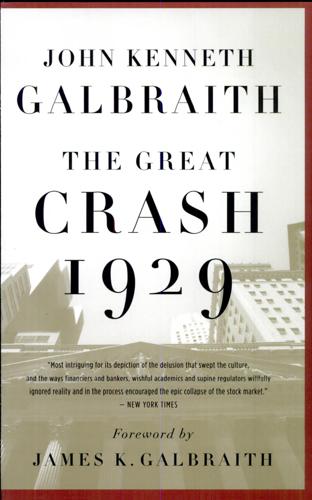
The Great Crash 1929
by
John Kenneth Galbraith
Published 15 Dec 2009
As Chairman of the Democratic National Committee, he was also politically committed to a firm friendship for the people. He believed that everyone should be in on the kind of opportunities he himself enjoyed. One of the fruits of this generous impulse during the year was an article in the Ladies' Home Journal with the attractive title, "Everybody Ought to be Rich." In it Mr. Raskob pointed out that anyone who saved fifteen dollars a month, invested it in sound common stocks, and spent no dividends would be worth—as it then appeared—some eighty thousand dollars after twenty years. Obviously, at this rate, a great many people could be rich. But there was the twenty-year delay.

The Cost of Inequality: Why Economic Equality Is Essential for Recovery
by
Stewart Lansley
Published 19 Jan 2012
In one advertisement backing Herbert Hoover during the 1928 Presidential campaign, the Republicans promised: ‘A chicken in every pot and a car in every garage’. Irving Fisher, one of the country’s most distinguished economists, opined shortly before the crash that shares had reached ‘a permanently high plateau’. On the eve of the crash the financier John J Raskob, in an article called ‘Everybody Ought to be Rich’, came out with a plan to allow the poor to make money on the stockmarket. How debt levels and income concentration soared in 1920s America (Figure 8.1) 314 As in the decade leading to 2007, much of the apparent economic miracle of the 1920s had been built on an expansion of debt. As shown in figure 8.1, the ratio of household debt to national income rose by more than 70 per cent between 1920 and 1930.

Heads I Win, Tails I Win
by
Spencer Jakab
Published 21 Jun 2016
At the other extreme was Time’s “Home $weet Home” cover in the summer of 2005 asking, “Will your home make you rich?” just months before the peak in real estate prices. Most egregious was a sensational article in Ladies’ Home Journal on the eve of the 1929 stock market crash by speculator John J. Raskob. “Everybody Ought to Be Rich” actually suggested buying stocks on margin—a strategy that financially wiped out anyone who tried it. Bestselling books mirror the same crazy swings. For example, the peak in technology stocks in 2000 was preceded by titles including Dow 36,000: The New Strategy for Profiting from the Coming Rise in the Stock Market; Dow 40,000: Strategies for Profiting from the Greatest Bull Market in History; and, hey, why not, Dow 100,000: Fact or Fiction.

The Great Divergence: America's Growing Inequality Crisis and What We Can Do About It
by
Timothy Noah
Published 23 Apr 2012
To embrace the fantasy of a poverty-free America, one had to be unaware that during the 1920s the bottom 95 percent saw its proportion of the nation’s income drop from 72 percent to 64 percent.13 The bigger problem, of course, was that economic catastrophe loomed for just about everyone. Why did people believe otherwise? Partly because financial experts told them to. In August 1929 the investor and Democratic National Committee chairman John J. Raskob published, in the Ladies’ Home Journal, an article titled “Everybody Ought to be Rich.” In mid-October Yale’s Irving Fisher—the most eminent economist of the era—pronounced, “Stock prices have reached what looks like a permanently high plateau.” Mere days later, the stock market crashed and the Great Depression began. By this time King had left the NBER for a professorship in economics at New York University.
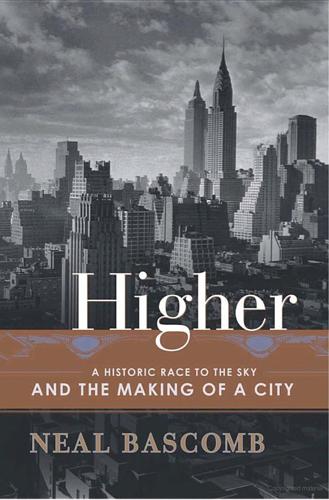
Higher: A Historic Race to the Sky and the Making of a City
by
Neal Bascomb
Published 2 Jan 2003
Without hesitation, the bulls shrugged off attempts by the Federal Reserve to rein in margin loans. They muzzled the bears who dared predict doom, calling them “destructionists” of America. Investment trusts, like Riordan’s County Trust, opened at a rate of several per week and were leveraged to the hilt. Readers rushed newsstands to read John J. Raskob’s article “Everybody Ought to Be Rich.” One paper called his plan “a practical Utopia”; another said it was the “greatest vision of Wall Street’s greatest mind.” Advice on how to win a fortune on Wall Street became a business in its own right, publishers printing thousands of “morning letters” every day to show how to beat the market.
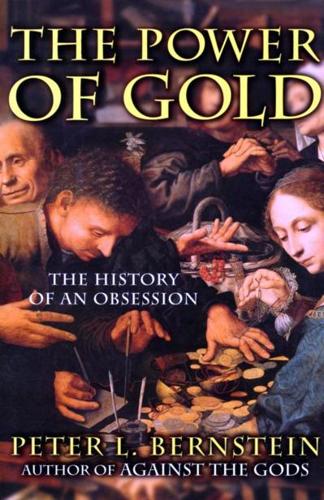
The Power of Gold: The History of an Obsession
by
Peter L. Bernstein
Published 1 Jan 2000
Then, after going nowhere in the first five months of 1929, it roared upward by 25 percent over the next three months before making its final top in August 1929. In late 1928, when John J. Raskob, Director of General Motors, friend of the DuPonts, and Chairman of the Democratic Committee, wrote in the Ladies' Home Journal that "Everybody Ought to Be Rich," he evidently had plenty of believers.1 It is fair to ask why the unfolding miracles in the stock market were of any concern to the Federal Reserve, which had been established in 1913 to supervise commercial banks and to provide liquidity for the economy as needed. The concern was not misplaced.

Capitalism in America: A History
by
Adrian Wooldridge
and
Alan Greenspan
Published 15 Oct 2018
New investors could buy on 25 percent margin—that is, borrowing 75 percent of the purchase price. Regular customers could buy on 10 percent margin.1 Some of the wisest people in the country applauded the bull market. In 1927, John Raskob, one of the country’s leading financiers, wrote an article in Ladies’ Home Journal, “Everybody Ought to Be Rich,” advising people of modest means to park their savings in the stock market.2 A year later, Irving Fisher, one of the country’s most respected economists, declared that “stock prices have reached what looks like a permanent high plateau.” Others were more skeptical: as the market took off in 1927, the commerce secretary, Herbert Hoover, condemned the “orgy of mad speculation” on Wall Street and started to explore ways of closing it down.3 The orgy proved more difficult to stop than to start.
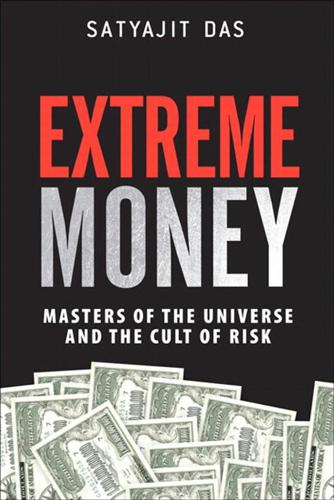
Extreme Money: Masters of the Universe and the Cult of Risk
by
Satyajit Das
Published 14 Oct 2011
Glassman, an investment columnist for the Washington Post, and Hassett, a former senior economist with the Federal Reserve, inverted normal investment logic by arguing that over the long term shares were no riskier than bonds and that the traditional risk premium (higher return) demanded by investors could be eliminated. The Dow Jones Industrial Average, trading at the time around 11,000, was forecast to more than triple. In a 1929 article “Everybody ought to be rich” in the Ladies’ Home Journal, John Raskob, a director of General Motors, wrote in a similar vein. An investment in shares of just $15 a month would, with dividends reinvested, increase in value to about $80,000 after 20 years. But Raskob, the man who wanted his readers to invest in stock for long-term wealth, was selling his shares even before his article appeared, avoiding the 1929 crash.
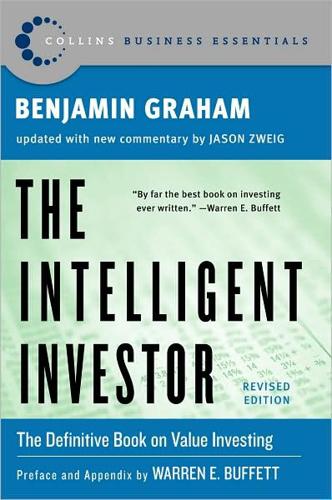
The Intelligent Investor (Collins Business Essentials)
by
Benjamin Graham
and
Jason Zweig
Published 1 Jan 1949
It may be well to point up what we have just said by a bit of financial history—especially since there is more than one moral to be drawn from it. In the climactic year 1929 John J. Raskob, a most important figure nationally as well as on Wall Street, extolled the blessings of capitalism in an article in the Ladies’ Home Journal, entitled “Everybody Ought to Be Rich.”* His thesis was that savings of only $15 per month invested in good common stocks—with dividends reinvested—would produce an estate of $80,000 in twenty years against total contributions of only $3,600. If the General Motors tycoon was right, this was indeed a simple road to riches. How nearly right was he?
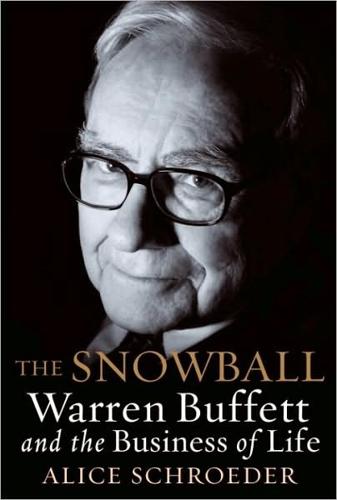
The Snowball: Warren Buffett and the Business of Life
by
Alice Schroeder
Published 1 Sep 2008
Howard became a deacon in 1928 at the age of 25. 33. Address to the American Society of Newspaper Editors, Washington, D.C., January 25, 1925. Chapter 6 1. Even so, only three in a hundred Americans owned stocks. Many had borrowed heavily to play the market, entranced by John J. Raskob’s article, “Everybody Ought to Be Rich” in the August 1929 Ladies’ Home Journal and Edgar Lawrence Smith’s proof that stocks outperform bonds (Common Stocks as Long-Term Investments. New York: The MacMillan Company, 1925). 2. “Stock Prices Slump $14,000,000,000 in Nation-Wide Stampede to Unload; Bankers to Support Market Today,” New York Times, October 29, 1929; David M.